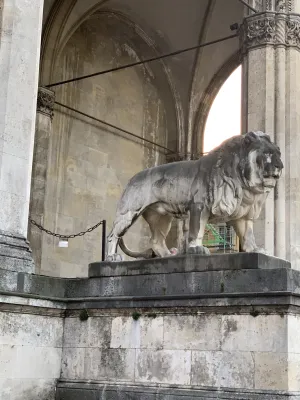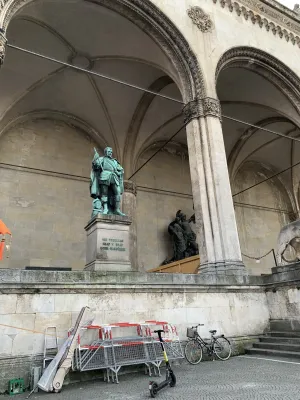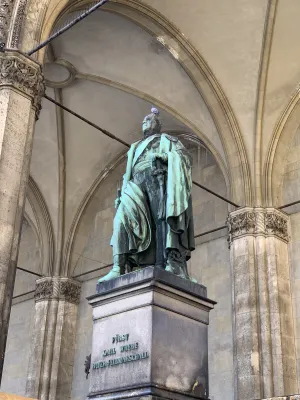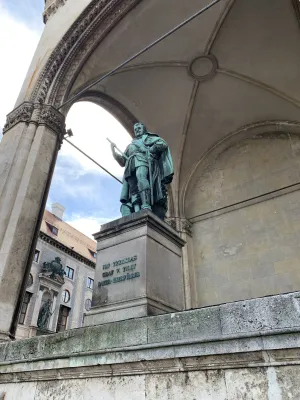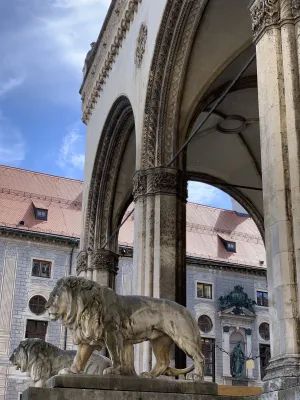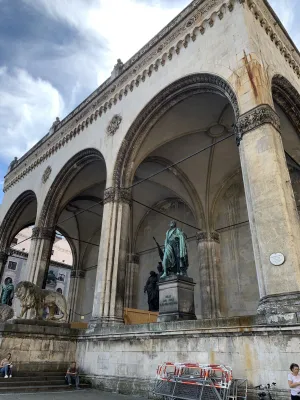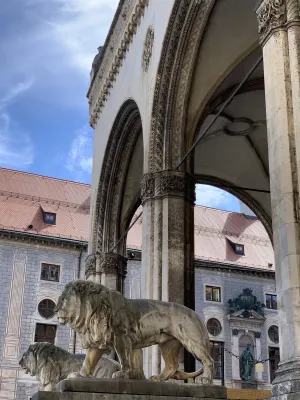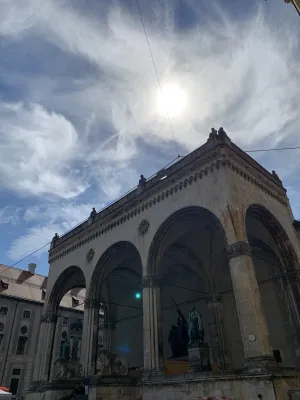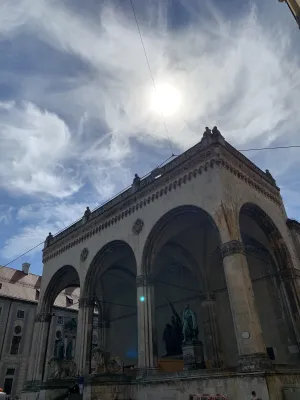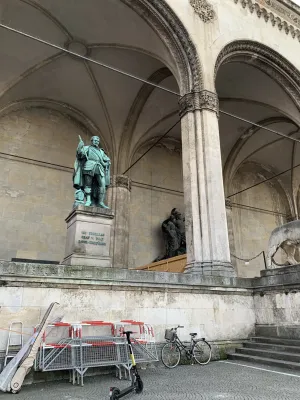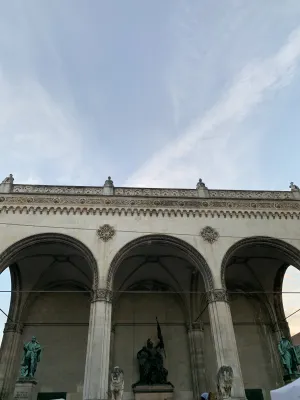I was treated to a special sight at the southern end of Odeonsplatz in Munich. There stands the imposing Feldherrnhalle, which is every bit as impressive as its Florentine counterpart, the Loggia dei Lanzi. Locals and tourists alike love to sit on the steps of the grand staircase in summer and gaze up at the magnificent Siegestor. I am always fascinated by this historic hall of splendor with its three round arches, which was built between 1841 and 1844 by the court architect Friedrich von Gärtner at the request of King Ludwig I in honor of the Bavarian army, based on the Italian model. The magnificent Feldherrnhalle connects the historic old town to the new boulevard and houses the bronze statues of Count Tilly and General von Wrede in its side arcades, which were cast from captured cannons. In 1894, a Bavarian army monument made of bronze was erected in the middle of the hall under Prince Regent Luitpold. This monument by Ferdinand Miller the Younger commemorates the Franco-Prussian War of 1870 to 1871. However, the two main attractions, the majestic lions on either side of the central staircase, were not erected until 1906. The guardians, made of South Tyrolean marble by Wilhelm Ruemann, are the real stars of this beautiful hall, which became a place of worship for the National Socialists after Hitler’s coup attempt there on November 9, 1923, was thwarted. After seizing power in 1933, Adolf Hitler had a bronze plaque installed on the east side, and everyone who passed by had to pay their respects with a Hitler salute. Those who did not want to do so took Viscardigasse behind the Feldherrnhalle and thus reached Odeonsplatz without having to give the Hitler salute. This incident earned the alley the nickname “Drückebergergasserl” (shirker’s alley). Today, golden paving stones commemorate the silent protest of passers-by. This 18-meter-long trail of 44 stones was created by Bruno Wank. The Feldherrnhalle has always been a place for gatherings, demonstrations, and concerts. It is not only a monument, but also a reminder of the dangers of political extremism. The classicist loggia made of Kelheim limestone and modeled on Italian designs is a historic building and, for me, a magnificent sight in Munich’s Maxvorstadt district.
